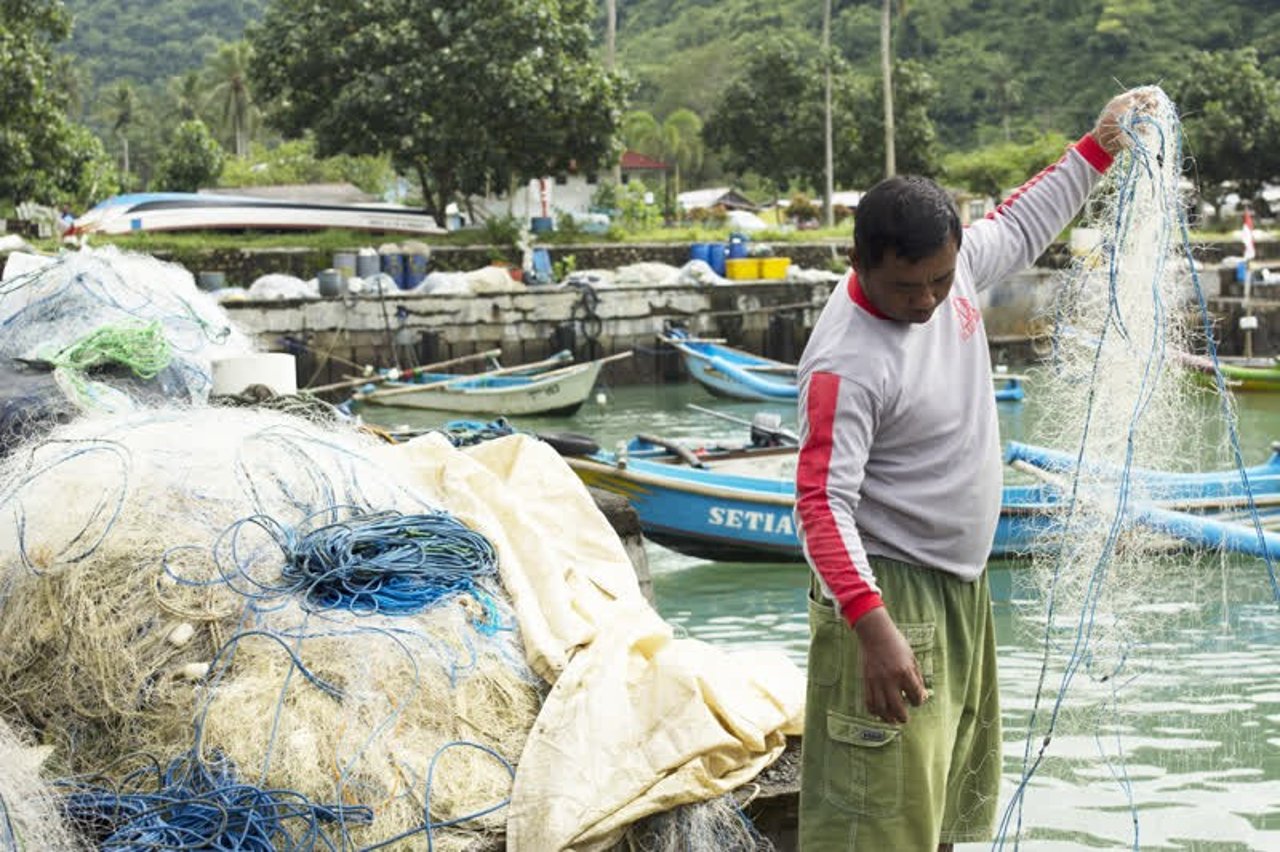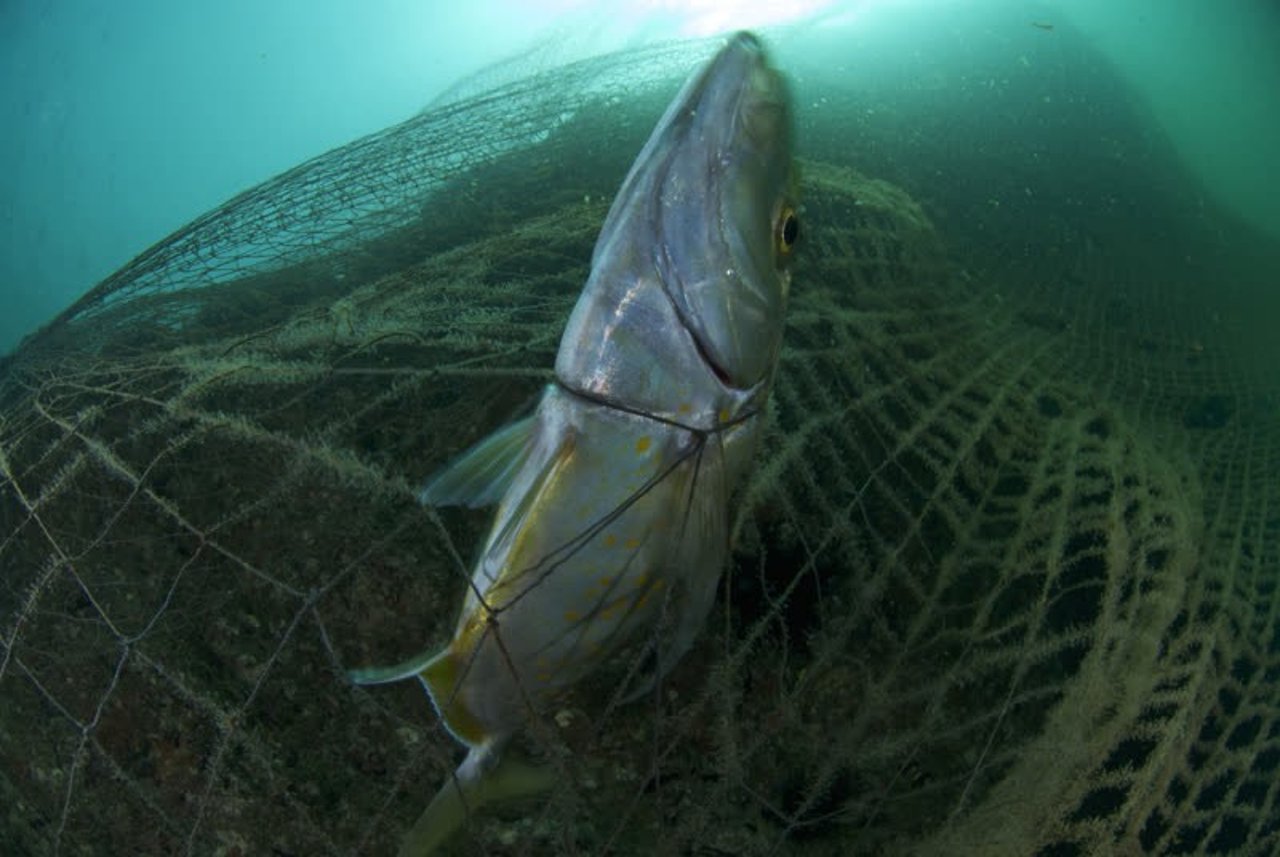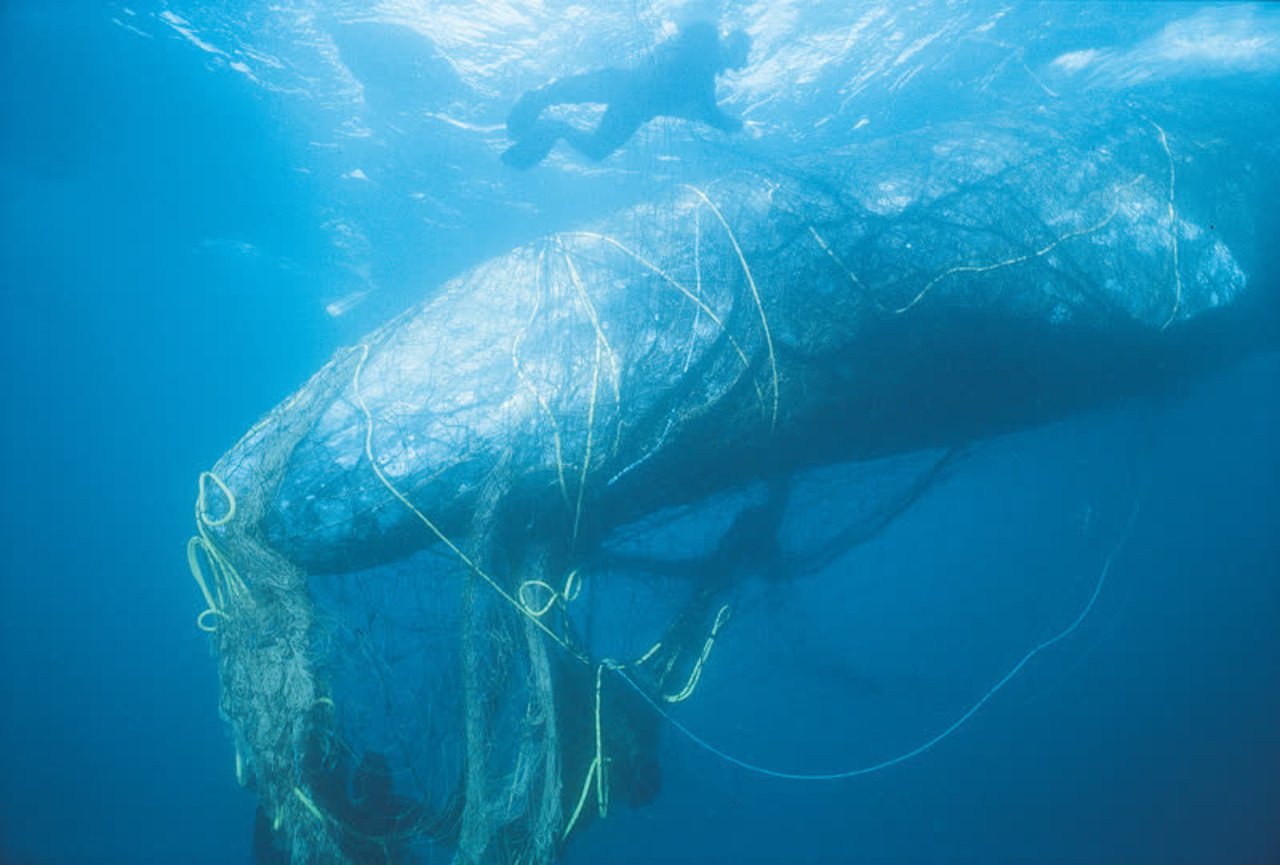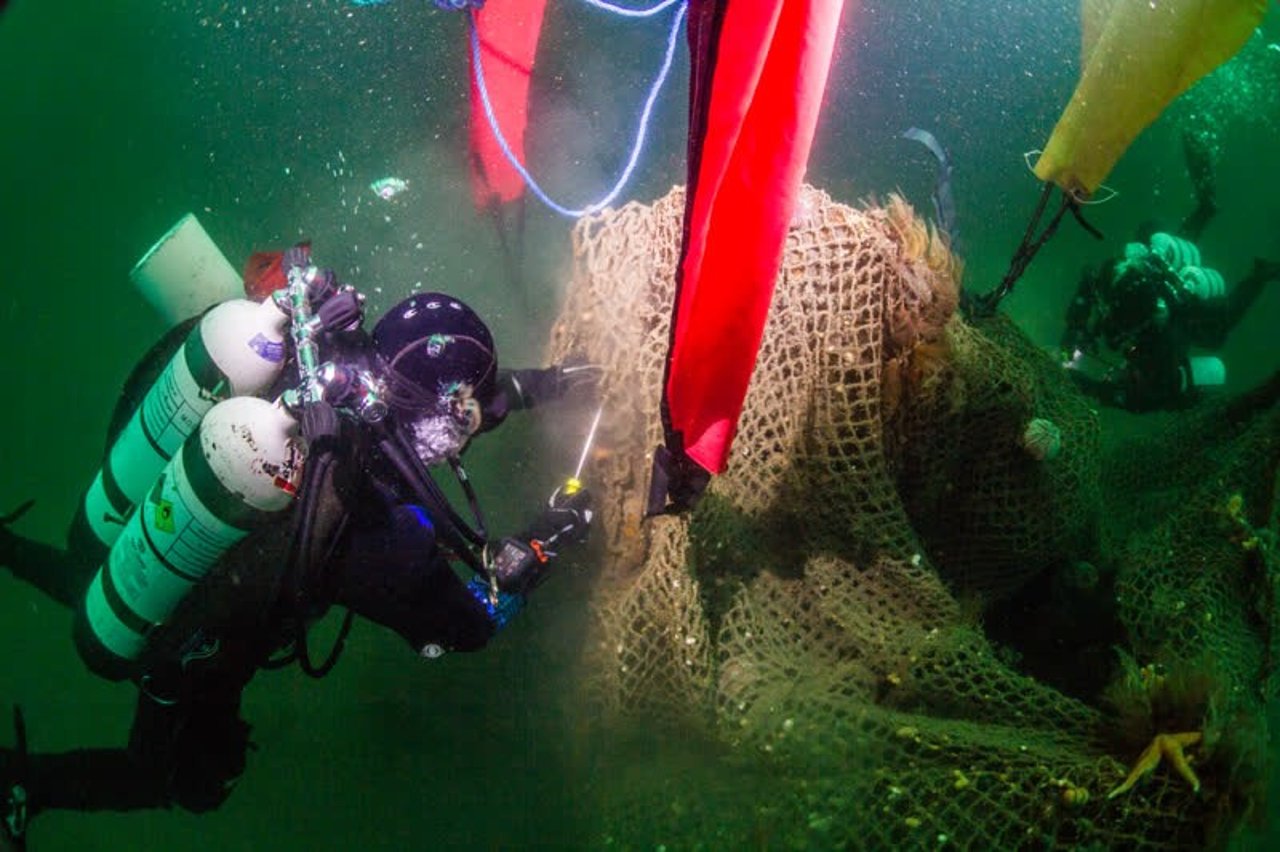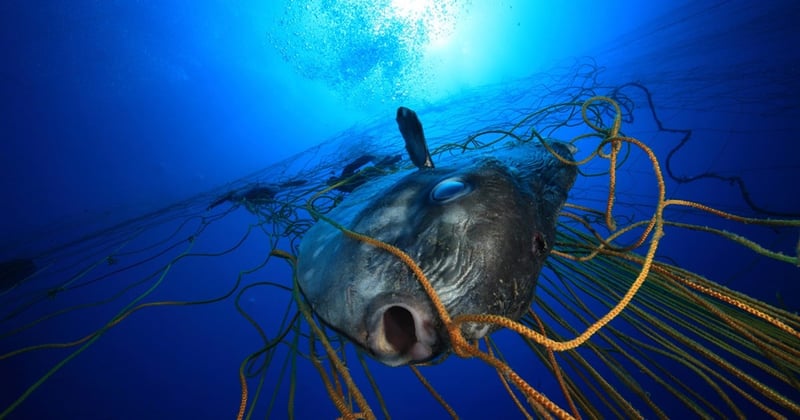
The deadliest catch: lost fishing gear is more abundant than ever
Blog
The health of our oceans and sea animals is at peril. Urgent action to turn the tide is needed, new research reveals
The new report, from Laurent Lebreton, an oceanographer with the Ocean Cleanup Foundation, shows that the problem of marine debris is much bigger than previously thought.
The "Great north Pacific garbage patch" – an underwater whirlpool of trash and debris – is 4 to 16 times bigger than previous estimations, occupying an area twice the size of France.
It’s made up of an estimated 1.8 trillion pieces of rubbish, most of which is in large chunks.
Garbage patch ghost gear
Almost half of the total weight of surface debris in the "garbage patch" is made up of lost and abandoned fishing gear, also called "ghost gear."
Our gear marking project in Indonesia is helping to tackle the problem. The marking of gear linking it to manufacturers and owners helps to build up a global picture of where it is, and who is losing it in order to find practical solutions.
Since the 1960s, fishing gear has been made from very durable materials, mostly plastic, which can continue to entangle sea animals for up to 600 years.
This eventually degrades into microplastics, potentially entering our food chain.
A lot to learn
Until recently, the ghost gear issue has not been well understood.
A 2009 report from the United Nations Environment Programme (UNEP) suggested that 640,000 tons of fishing gear is lost or abandoned in the world’s oceans every year.
But, more recent research suggests that this number is considerably higher.
The impact ghost gear has on animals is equally shocking.
Our recent report, Ghosts beneath the waves, highlights that at least 136,000 whales, seals, sea lions, turtles and dolphins are entangled in ghost gear every year, while innumerable fish, birds and crustaceans are caught and needlessly killed.
We've also urged the world's biggest seafood companies to do more to adress the issues surrounding ghost gear.
A fish entangled in ghost gear. Photo by Sijmon de Waal of Marine Photobank
71% of marine animal entanglements involve ghost gear, and 45% of all marine mammals on the International Union for Conservation of Nature (IUCN) Red List of Threatened Species have been impacted by ghost gear.
Fishing gear is designed to capture and kill marine animals, and it continues to do so when lost at sea for long periods of time.
While no fisher ever wants to lose gear, unfortunately, gear loss can and does happen.
Heartbreaking impact on sea life
When whales, turtles and dolphins get caught in lost gear, they can sustain severe injuries and often drag the gear with them for many miles before becoming exhausted and drowning.
Rescuers untangle a gray whale from ghost net off the coast of California. Photo provided by Bob Talbot of Marine Photobank
Some birds, turtles and whales eat so much plastic, it makes up around three-quarters of their diet, causing them to die slow and painful deaths.
Our solution for animals
We founded the Global Ghost Gear Initiative (GGGI) in 2015, to bring together all relevant sectors, including the fishing industry, and tackle the problem at global scale.
As part of the GGGI Divers in the UK have been trained in our unique project at Scapa Flow. Rubbish, including ghost gear, collects around the WW1 wrecks in Orkney and is a death trap to the area's marine wildlife. Photo provided by Christine Grosart of Ghost Fishing UK
In the last three years, the alliance has grown to 68 participant organizations.
It’s supported by 12 governments, as well as organizations such as the European Union Directorate-General of Maritime Affairs and Fishers and the United Nations Food and Agriculture Organization.
Last month (March 2018) we saw one of the world’s biggest seafood companies, Thai Union, join forces with the GGGI to help combat marine plastic pollution.
Also, the GGGI – and all the expertise it combines – is trialing, scaling up and replicating solutions.
It focusses on three Rs – remove, reduce and recycle – to ensure no further gear enters our oceans.
Creating a sea change requires a truly united approach at every level.
Only by working together locally, regionally, and globally can we hope to combat these ghosts beneath the waves and protect our oceans and the life within them.
Learn more about the progress of our Sea Change campaign by signing up for our email updates.
Top photo provided by Alessio Viora of Marine Photobank
71% of marine animal entanglements involve ghost gear, and 45% of all marine mammals on the International Union for Conservation of Nature (IUCN) Red List of Threatened Species have been impacted by ghost gear.
